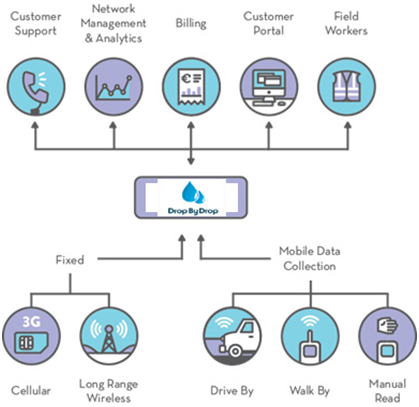DbD provides a comprehensive data collection infrastructure, allowing you to concentrate on using the data available from advanced metering, rather than the technology used to collect it. We combine mobile collection and fixed network data from a wide variety of technologies, into a single high performance repository.
By using the DbD service, you see a simple, consistent interface, allowing you to choose the most appropriate technical solutions without vendor lock-in. So the DbD platform is Vendor and Protocol independent.

Smart water management can be implemented in the following modes using DbD architecture:
Three-hop mode
Water meter data is converged on the collector and then on the concentrator. Data backhaul is implemented in wired or wireless mode. Wireless backhaul uses the CJ/T 188-2004 protocol. This protocol is so open that product implementation varies depending on vendors. Water meters, collectors, and concentrators provided by different vendors are of poor compatibility and therefore cannot be interconnected. As a result, water meters provided by different vendors cannot be replaced with each other. Wired backhaul uses M-Bus which has high assembly costs. One concentrator can be connected to only more than 100 water meters. The water meter network must be commissioned at the assembly site, which is complicated and requires long project duration.
Two-hop mode
Lora is generally used. Water meter data is converged on the collector. Data backhaul is implemented in wireless mode. In Lora, layers above the MAC layer use proprietary protocols. Protocols customized by different vendors are incompatible, complicating equipment maintenance and replacement.
One-hop mode
GPRS is used. Power consumption is high, and interference is strong


